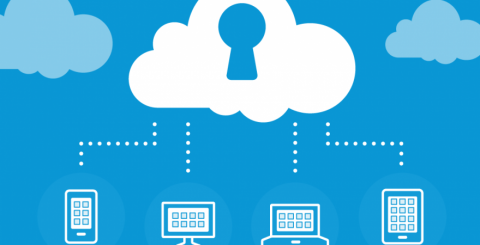Understanding Single Sign-On Its Need for Businesses

Technology and business today have a relationship which is helping both towards their goals. The main reason behind adoption is the need to move with time, and one such technology is single sign-on.
Single sign-on (SSO) perhaps is a less heard name but its implementation can be witnessed daily in personal and business lives.
Single sign-on allow users to login to multiple systems with just one set of credentials which provides them a connected experience. Connecting and utilizing a single Identity across multiple digital properties is what single sign-on does.
For businesses, single sign-on is helping them simplifying their work and improving efficiency of their users and staff.
What is Single Sign-on ?
Commonly known as SSO, is an advancement in authentication technology to further improve and limit the use of passwords as possible to user authentication which can benefit both, the user and the business.
What single sign-on achieves is it allows users to create and use a single identity across all digital properties. The same identity can be used to log into multiple web and mobile properties without having to authenticate separately for each.
A single identity enables single logout across all digital properties. Single sign-out signs users out of all the active sessions across all the properties.
The benefit of SSO can be utilized from any digital properties which are under SSO umbrella.
How does single sign on works?
The basis of SSO is centralized linked identities.
It is accomplished using LADP, JWT, and SAML.
Single sign on stores the credentials in local storage to support different authentication mechanisms for different resources and applications and translate them to the credentials required for different mechanisms.
It follows three steps i.e Authentication, Authorization and attributes exchange.
When a user tries to log in to an SSO-enabled website, its identity is validated on that website. After passing authentication check, its authorization over domains and elements is checked, making the user log in.
The access token is stored in local cookie storage until the user logs out. It is also possible to provide a custom session timeout for that cookie.
When the same user visits another SSO enabled site which is falling under same SSO umbrella, the website again checks for authentication and authorization which is validated form access token stored in local storage.
As the user logs out, the cookie session gets ended and is logged out from all the connected properties.
Types of Single Sign-on?
There are basically four types of SSO,
Enterprise Single Sign-On:
It is especially for large organizations. It is based on active directory. It allows users to use current identities for internal processes, systems, and technologies.
Container Based Single Sign-On:
It is used across the applications within the same container. In this type, credentials are shared between 2 web application that's deployed on the same application server.
Web Single Sign-On
It allows users to access a number of internet services that requires authentication by having unique website authentication. Users do not need to remember different passwords for web services that are using multiple technologies.
Federation SSO
It enables SSO between two trusted partners across heterogeneous domains.
Federation permits partners to share identity details and data within a circle of trust by using a set of open protocols.
Why businesses need single-sign-on?
Businesses with multiple web properties can implement SSO to their properties, connecting users with a unified identity on multiple web platforms.
Especially when in mergers and partnerships, there is a need to unify identities for future business goals. The specialty of unifying existing and future customer identities is only possible through it only.
For internal processes in business, the employees find it difficult to use multiple credentials, just like for multiple web properties. Every software and process has its own set of credentials, like Email, CRM, etc., using a single identity with seamless login definitely will help in productivity.
This is how single sign-on works and how business can use it in leveraging it.
Similar Articles
Discover how an Employer of Record (EOR) streamlines cross-border hiring, ensuring compliance, reducing risk, and simplifying global workforce management.
One important but frequently disregarded component of house maintenance is routine furnace maintenance. Many homeowners might hesitate to schedule routine furnace inspections, seeing them as an unnecessary expense
As demand for rapid, reliable delivery rises, businesses turn to AI-driven answering services to optimize same-day delivery solutions. Using artificial intelligence, companies can instantly manage customer inquiries, streamline order processing, and provide real-time updates—critical elements in meeting tight delivery windows
In today’s fast-paced construction industry, accurate and efficient project estimation is essential. Construction estimating software has emerged as a powerful tool, streamlining the bidding process, improving project management, and enhancing budget tracking
Organizations of all sizes are in search of revolutionary methods to optimize their operations, streamline costs, and preserve a competitive area. One developing fashion is the outsourcing of accounting and compliance services
If you conduct business with a Vietnamese company regularly, registering your business with the Vietnamese government could be highly advantageous. Not only can you benefit from lower taxation and reduced tariffs, but you’ll also enjoy several other perks that come with formal registration
Discover when hiring a fractional SDR can help boost your business expansion by providing cost-effective, flexible sales support without full-time commitment.
Today's businesses are navigating talent challenges that span across industries. The demand for cross-industry skill mapping is growing, with competencies now seen as transferable assets. As industries shift, this approach helps create a workforce that's ready for change. But how are these adaptable skills shaping the jobs of tomorrow?
Customer Experience (CX) is the overall idea that a customer has formed on a brand throughout the entire process of his/ her interaction with it. It covers all stages from the moment when the customer gets aware of the existence and services or products offered by a firm right up to and including, the point where a customer even interacts with a firm’s services or products.









